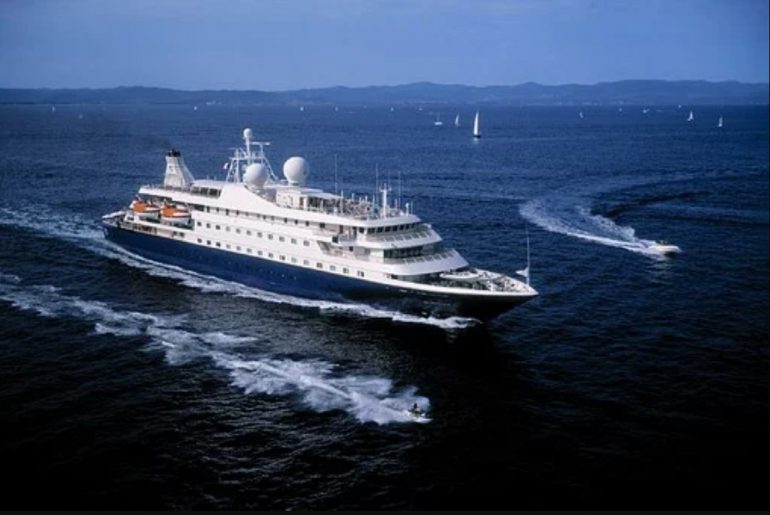Safety should always be your number one concern when it comes to boating. Whether you’re a first-time boat owner or you’ve been sailing for years, it’s essential to know the best ways to stay safe on the water. This three-part guide will walk you through everything you need to know about staying safe on your next boat voyage.
Vagabondish is reader-supported. When you buy through links on our site, we may earn a small affiliate commission. Read our disclosure.
#1: Adequately Plan For The Voyage
The old adage ‘if you fail to plan, you plan to fail’ has never been more apt than when it applies to a boat voyage at sea. The first step to having a safe journey is planning the trip adequately. There are numerous elements involved in preparing for a boat voyage.
Some boats should never venture far beyond the shore. Find out if your boat can handle long-distance travel, and if not, get a vessel in Marina Bay that can. All you need to do is seek help from experts in the area or do a quick online search. Check all the mechanical elements of the boat to ensure they are functioning well so they don’t malfunction while you are in the open sea, which can be disastrous.
Checking if a boat is seaworthy involves checking its physical and structural condition, including the hull, cockpit, and transom. You should also check the ship’s installed components such as the electrical system, engine, steering cables, propeller, and anchor.
Ensure you have all the necessary safety equipment on your boat. Your boats should carry enough approved life jackets for everyone on board. Also, ensure you have:
Two-way radios or cell phones
In an emergency, it’s crucial to get in touch with help as soon as possible. Keep your radio or phone easily accessible in case of an accident.
Navigation equipment
Always ensure you have enough navigational equipment such as charts, binoculars, and compasses for everyone onboard.
Fire Extinguishers
Keep fire extinguishers on board in case of an emergency. According to the USCG, most boating accidents involve fire, so having a way to put out a blaze quickly can save lives.
Anchor
When you’re stopped or drifting, you’ll want some way to keep from moving too far without anyone at the wheel. A standard anchor will do just fine. Ensure it’s heavy enough for the conditions you will be facing
Confirm if safety and emergency equipment are working properly before sailing. Also, confirm the boat’s documentation and the contact information you may need if the boat has issues during the voyage.
#2: Determine Your Responsibility As The Skipper
Once you have made comprehensive plans for the voyage, the next step is to determine your responsibilities as the boat’s skipper. Your first responsibility, of course, is your ability to drive the boat. You should be confident in your ability as the skipper, and if you are not, you should give yourself enough time to practice before your voyage until you feel confident enough.
Your responsibility as the skipper also involves ensuring the boat is seaworthy, which you should have done when planning your trip. As seen above, preparation for a boat voyage will also include checking whether the weather and the tides are suitable for travel for the duration of your journey. If not, you might have to adjust your plans.
If you are traveling with passengers, your responsibilities as the boat’s skipper become a bit more complex. You will have to ensure the craft can handle the number of passengers you plan on bringing on board and their luggage. You should also know if any passengers have a medical condition and what you can do if the worst happens. Having adequate medical supplies on the board is critical and should be part of the planning stage.
#3: Fuelling The Voyage

The amount of fuel you get for the boat trip is one of the most important aspects of having a safe boat voyage. As the boat’s skipper, it is your responsibility to determine how much fuel the vessel will need for the duration of the voyage. However, if you do not fully know how to calculate it, you can ask for help. It does not diminish your ability as a skipper.
Once you have the boat’s fuel consumption rate per hour and travel distance, you should know how much fuel you will need. It would be best to establish the estimated duration and length of the voyage during the planning stage.
It would be best to map out possible fuelling stations along the voyage where you can refuel your boat. Fuel consumption is precarious, so you should ensure you have reserved fuel in the craft.
Boating can be a great experience, but it’s essential to follow proper safety precautions every time you go out on the water. If you have a boat, stay up-to-date on required boater safety courses so you know how to handle your vessel in any situation. Always dress for the occasion, cold weather, warm weather, and bad weather. Finally, always be prepared for an emergency by carrying essential safety equipment on board at all times. With these tips in mind, you should feel more confident when setting sail next time around.


